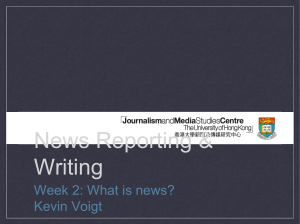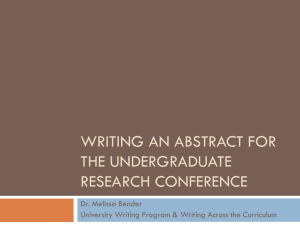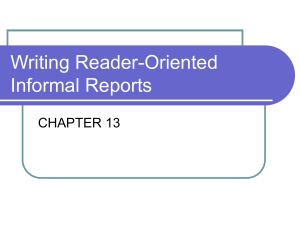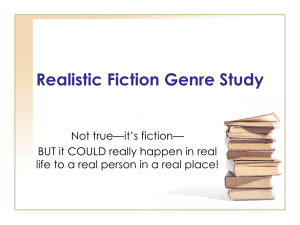Monday Tuesday Wednesday Thursday Friday 3/24 Context Clues
advertisement
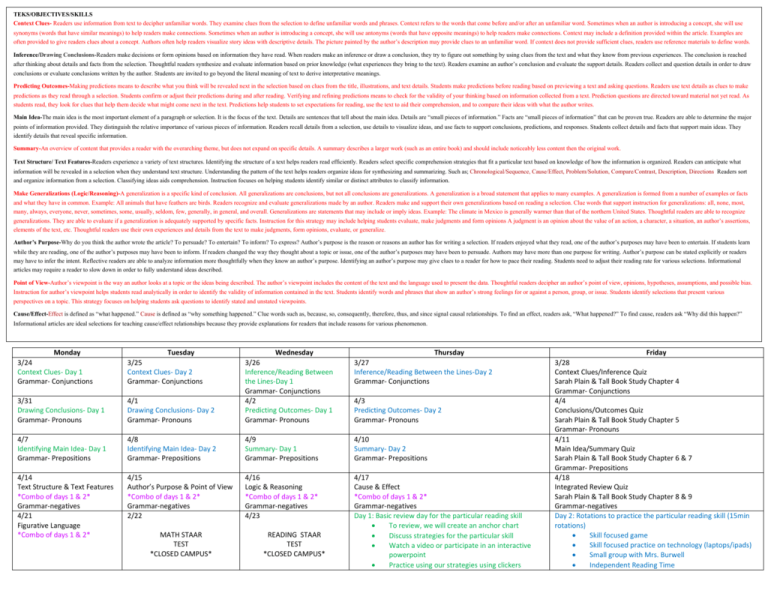
TEKS/OBJECTIVES/SKILLS Context Clues- Readers use information from text to decipher unfamiliar words. They examine clues from the selection to define unfamiliar words and phrases. Context refers to the words that come before and/or after an unfamiliar word. Sometimes when an author is introducing a concept, she will use synonyms (words that have similar meanings) to help readers make connections. Sometimes when an author is introducing a concept, she will use antonyms (words that have opposite meanings) to help readers make connections. Context may include a definition provided within the article. Examples are often provided to give readers clues about a concept. Authors often help readers visualize story ideas with descriptive details. The picture painted by the author’s description may provide clues to an unfamiliar word. If context does not provide sufficient clues, readers use reference materials to define words. Inference/Drawing Conclusions-Readers make decisions or form opinions based on information they have read. When readers make an inference or draw a conclusion, they try to figure out something by using clues from the text and what they know from previous experiences. The conclusion is reached after thinking about details and facts from the selection. Thoughtful readers synthesize and evaluate information based on prior knowledge (what experiences they bring to the text). Readers examine an author’s conclusion and evaluate the support details. Readers collect and question details in order to draw conclusions or evaluate conclusions written by the author. Students are invited to go beyond the literal meaning of text to derive interpretative meanings. Predicting Outcomes-Making predictions means to describe what you think will be revealed next in the selection based on clues from the title, illustrations, and text details. Students make predictions before reading based on previewing a text and asking questions. Readers use text details as clues to make predictions as they read through a selection. Students confirm or adjust their predictions during and after reading. Verifying and refining predictions means to check for the validity of your thinking based on information collected from a text. Prediction questions are directed toward material not yet read. As students read, they look for clues that help them decide what might come next in the text. Predictions help students to set expectations for reading, use the text to aid their comprehension, and to compare their ideas with what the author writes. Main Idea-The main idea is the most important element of a paragraph or selection. It is the focus of the text. Details are sentences that tell about the main idea. Details are “small pieces of information.” Facts are “small pieces of information” that can be proven true. Readers are able to determine the major points of information provided. They distinguish the relative importance of various pieces of information. Readers recall details from a selection, use details to visualize ideas, and use facts to support conclusions, predictions, and responses. Students collect details and facts that support main ideas. They identify details that reveal specific information. Summary-An overview of content that provides a reader with the overarching theme, but does not expand on specific details. A summary describes a larger work (such as an entire book) and should include noticeably less content then the original work. Text Structure/ Text Features-Readers experience a variety of text structures. Identifying the structure of a text helps readers read efficiently. Readers select specific comprehension strategies that fit a particular text based on knowledge of how the information is organized. Readers can anticipate what information will be revealed in a selection when they understand text structure. Understanding the pattern of the text helps readers organize ideas for synthesizing and summarizing. Such as; Chronological/Sequence, Cause/Effect, Problem/Solution, Compare/Contrast, Description, Directions Readers sort and organize information from a selection. Classifying ideas aids comprehension. Instruction focuses on helping students identify similar or distinct attributes to classify information. Make Generalizations (Logic/Reasoning)-A generalization is a specific kind of conclusion. All generalizations are conclusions, but not all conclusions are generalizations. A generalization is a broad statement that applies to many examples. A generalization is formed from a number of examples or facts and what they have in common. Example: All animals that have feathers are birds. Readers recognize and evaluate generalizations made by an author. Readers make and support their own generalizations based on reading a selection. Clue words that support instruction for generalizations: all, none, most, many, always, everyone, never, sometimes, some, usually, seldom, few, generally, in general, and overall. Generalizations are statements that may include or imply ideas. Example: The climate in Mexico is generally warmer than that of the northern United States. Thoughtful readers are able to recognize generalizations. They are able to evaluate if a generalization is adequately supported by specific facts. Instruction for this strategy may include helping students evaluate, make judgments and form opinions A judgment is an opinion about the value of an action, a character, a situation, an author’s assertions, elements of the text, etc. Thoughtful readers use their own experiences and details from the text to make judgments, form opinions, evaluate, or generalize. Author’s Purpose-Why do you think the author wrote the article? To persuade? To entertain? To inform? To express? Author’s purpose is the reason or reasons an author has for writing a selection. If readers enjoyed what they read, one of the author’s purposes may have been to entertain. If students learn while they are reading, one of the author’s purposes may have been to inform. If readers changed the way they thought about a topic or issue, one of the author’s purposes may have been to persuade. Authors may have more than one purpose for writing. Author’s purpose can be stated explicitly or readers may have to infer the intent. Reflective readers are able to analyze information more thoughtfully when they know an author’s purpose. Identifying an author’s purpose may give clues to a reader for how to pace their reading. Students need to adjust their reading rate for various selections. Informational articles may require a reader to slow down in order to fully understand ideas described. Point of View-Author’s viewpoint is the way an author looks at a topic or the ideas being described. The author’s viewpoint includes the content of the text and the language used to present the data. Thoughtful readers decipher an author’s point of view, opinions, hypotheses, assumptions, and possible bias. Instruction for author’s viewpoint helps students read analytically in order to identify the validity of information contained in the text. Students identify words and phrases that show an author’s strong feelings for or against a person, group, or issue. Students identify selections that present various perspectives on a topic. This strategy focuses on helping students ask questions to identify stated and unstated viewpoints. Cause/Effect-Effect is defined as “what happened.” Cause is defined as “why something happened.” Clue words such as, because, so, consequently, therefore, thus, and since signal causal relationships. To find an effect, readers ask, “What happened?” To find cause, readers ask “Why did this happen?” Informational articles are ideal selections for teaching cause/effect relationships because they provide explanations for readers that include reasons for various phenomenon. Monday 3/24 Context Clues- Day 1 Grammar- Conjunctions Tuesday 3/25 Context Clues- Day 2 Grammar- Conjunctions Thursday 3/27 Inference/Reading Between the Lines-Day 2 Grammar- Conjunctions 4/1 Drawing Conclusions- Day 2 Grammar- Pronouns Wednesday 3/26 Inference/Reading Between the Lines-Day 1 Grammar- Conjunctions 4/2 Predicting Outcomes- Day 1 Grammar- Pronouns 3/31 Drawing Conclusions- Day 1 Grammar- Pronouns 4/7 Identifying Main Idea- Day 1 Grammar- Prepositions 4/8 Identifying Main Idea- Day 2 Grammar- Prepositions 4/9 Summary- Day 1 Grammar- Prepositions 4/10 Summary- Day 2 Grammar- Prepositions 4/14 Text Structure & Text Features *Combo of days 1 & 2* Grammar-negatives 4/21 Figurative Language *Combo of days 1 & 2* 4/15 Author’s Purpose & Point of View *Combo of days 1 & 2* Grammar-negatives 2/22 4/16 Logic & Reasoning *Combo of days 1 & 2* Grammar-negatives 4/23 4/17 Cause & Effect *Combo of days 1 & 2* Grammar-negatives Day 1: Basic review day for the particular reading skill To review, we will create an anchor chart Discuss strategies for the particular skill Watch a video or participate in an interactive powerpoint Practice using our strategies using clickers MATH STAAR TEST *CLOSED CAMPUS* READING STAAR TEST *CLOSED CAMPUS* 4/3 Predicting Outcomes- Day 2 Grammar- Pronouns Friday 3/28 Context Clues/Inference Quiz Sarah Plain & Tall Book Study Chapter 4 Grammar- Conjunctions 4/4 Conclusions/Outcomes Quiz Sarah Plain & Tall Book Study Chapter 5 Grammar- Pronouns 4/11 Main Idea/Summary Quiz Sarah Plain & Tall Book Study Chapter 6 & 7 Grammar- Prepositions 4/18 Integrated Review Quiz Sarah Plain & Tall Book Study Chapter 8 & 9 Grammar-negatives Day 2: Rotations to practice the particular reading skill (15min rotations) Skill focused game Skill focused practice on technology (laptops/ipads) Small group with Mrs. Burwell Independent Reading Time





